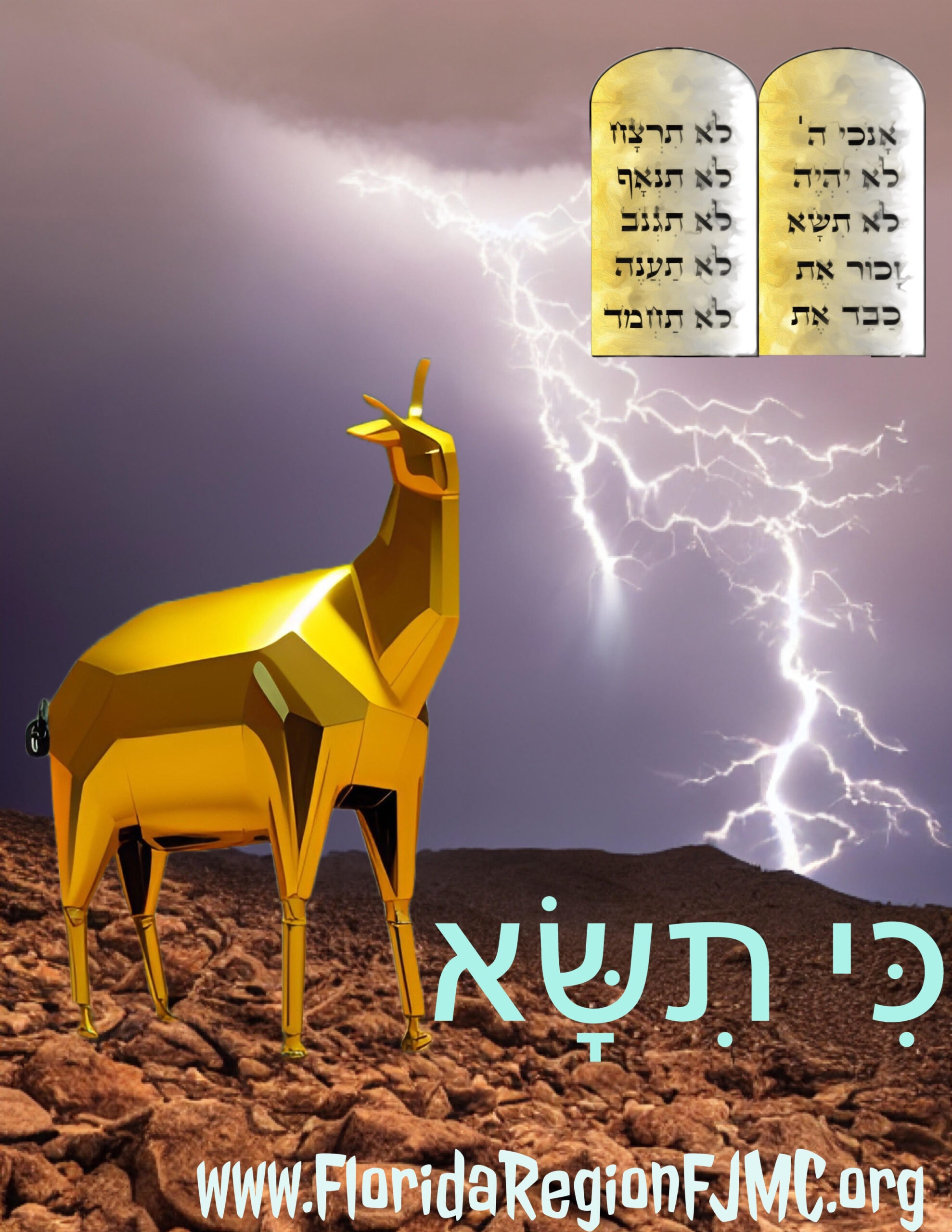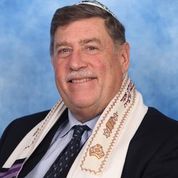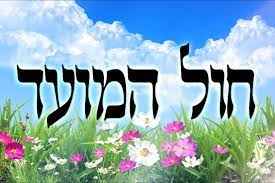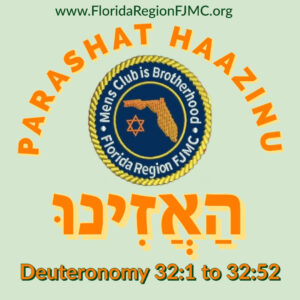
When you Choose Shabbat, you choose to learn that every Shabbat is different and special. This week I learned that Parashat Ki Tissa (כִּי תִשָּׂא), aka Ki Thissa or Ki Tisa, is the 21st weekly Torah portion in the annual cycle of Torah readings.
According to Wikipedia, Ki Tissa (כִּי תִשָּׂא) contains 7,424 Hebrew letters, 2,002 words, 139 verses and makes up 245 lines of a Torah scroll, making it the longest of the weekly Torah portions in the Book of Exodus (Exodus 30:11 through 34:35). Ki Tissa includes the incident of the “Golden Calf”, famously depicted in the Cecil B. DeMille 1956 classic film, “The Ten Commandments”.
Rabbi Michael D Klein of Temple Torat Emet offers his insights on this week’s Torah reading, Ki Tissa for Shabbat March 2, 2024 aka 22 Adar I 5784:
“Ki Thissa is one of the most troubling Torah portions in the entire Torah. Why? On the very day that Moses was to descend from Mount Sinai to bring the Tablets containing the words of the 10 Commandments written by G-d, many of the Jewish people regressed back to idolatry by forming and worshipping the golden calf. Thus, at the very moment that we were to achieve our destiny as, “a kingdom of priests and a holy nation”, we violated the first two laws of the holy decree which we had agreed to follow. Moses is forced to face the reality that, perhaps, his people are not spiritually ready to achieve the pinnacle of success.
There is some disagreement in the Torah as to the specific order of events which took place, witnessed by the fact that the order of events are related somewhat differently in the narrative of Exodus Ch 32 and retold by Moses in Deuteronomy Chapter 9. Clearly, this chapter is so troubling in Exodus, that after relating the history of the events, the Torah digresses to a totally different topic regarding observance of the Pilgrimage festivals.
What is the most significant lesson taught to us by this Sedra? Is the most important lesson the concept of patience since the building of the golden calf was partially due to a mathematical miscalculation of Moses’ anticipated return? Is the main lesson the lack of faith exhibited by the people and Aaron’s weak attempt to assuage and postpone their idolatrous desires? Or perhaps, the overriding lesson is that because of the influence of the depravity of living in Egypt for so many years, G-d was willing to forgive the people whom G-d had chosen?
All of these are plausible explanations, but, as for us, the abiding lesson may be, to not become a victim of our own success! So many times, we witness someone who reaches the pinnacle of personal success only to succumb to the foibles of human nature. This story, is a parable of the nature of human weakness and the necessity of maintaining a thankful and humble attitude especially when we are blessed with personal and financial success.
Questions to Consider
- How did Moshe justify the breaking of the 1st set of tablets?
- How are the 2 d set of tablets different from the first?
- Where were the 2nd set of tablets and the remnants of the 1st tablets stored?
- Why are the altar for sacrifice and the altar for incense placed in different locations?
Rabbi Michael D. Klein attended Yeshiva College of South Florida and served as Torah Reader, Hebrew teacher, Chazzan and spiritual leader of various synagogues throughout South Florida. In January 2015 he became Ritual Director, Bnai/Bnot Mitzvah instructor and 7th grade Hebrew instructor for Temple Torat Emet of Boynton Beach. In October 2019 he was accepted into an accelerated track and received his shicha from Yeshiva Adath Wolkowisk and has been the Rabbinic leadership of Temple Torat Emet since August 2020. In September of 2022 he was appointed Rabbinic and Spiritual Advisor of the Florida Region of FJMC.
Choose Shabbat; choose to celebrate, to light candles, sing songs and learn a little Torah.
This moment of Jewish Learning is brought to you by the Florida Region of the Federation of Jewish Men’s Clubs (FJMC). We are part of a confederation of over 200 Jewish Men’s Clubs and Brotherhoods representing over 20,000 members across the United States, Canada, Latin America, and beyond. Learn more about how your Jewish Men’s Club or Brotherhood can affiliate with the FJMC at: https://fjmc.org/for-clubs/affiliating-with-the-fjmc/.
The Florida Region of FJMC serves the needs of affiliated Men’s Clubs and Brotherhoods throughout the State of Florida. Get to know more about the FJMC Florida Region and our growing network of Jewish Men’s Clubs and Brotherhoods at www.floridaregionfjmc.org and please visit and LIKE our Florida Region FJMC Facebook Group at www.facebook.com/FloridaRegionFJMC.









